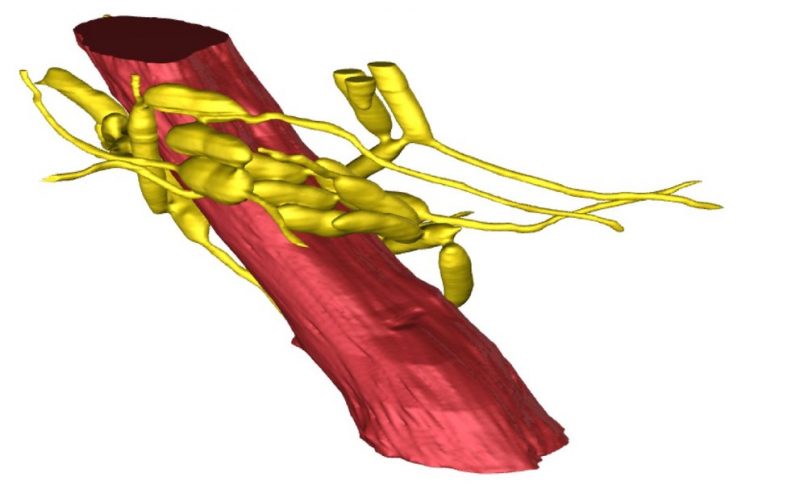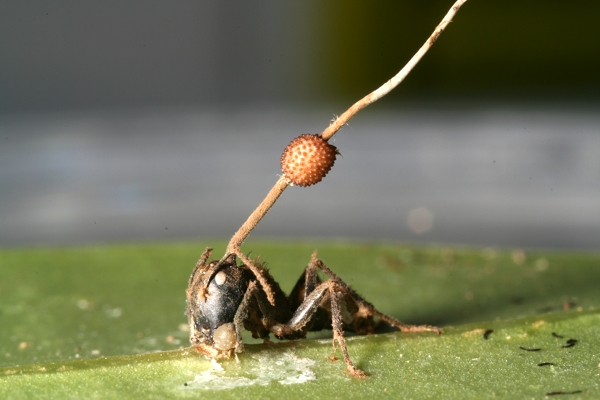
A parasite that can transform ants into zombies and make them do its bidding may sound like something straight out of a science fiction movie. However, that is precisely what the Ophiocordyceps unilateralis, or, zombie ant fungus does to unsuspecting carpenter ants. Now, a new study has discovered that the fungus accomplishes this ghoulish feat without infecting the ant’s brain.
Found primarily in tropical countries like Brazil and Thailand, the zombie ant fungus begins by draining the infected insect of all its nutrients and taking control of its mind. It then wills the enslaved insect to search for leaves or twigs about 25 centimeters above the ground – a zone that has the right temperature and humidity for the fungus to thrive. Once the ideal location is found, the poor ant is forced to clamp its mandibles to the underside of the leaf or twig. When the insect dies, usually within four to ten days, the parasite emerges as a stalk from the dead ant’s head and releases spores to the ground to infect other ants and repeat the cycle.

While the parasite’s ruthless mode of operation has been well-documented by researchers, the mechanics of how it colonizes the ants remained a mystery. Curious to know how the fungus — the inspiration behind the monsters in the video game “The Last of Us” — accomplishes this horrifying, but impressive, task, a team led by Pennsylvania State University entomologist, David Hughes, decided to investigate.
The scientists used a scanning electron microscope to create 3D images to determine the distribution, population, and interactions of the fungi inside the infected insects’ bodies. To their surprise, they found that while the fungi covered the ant’s entire body like a blanket, it left its brain untouched. They also found that the parasite’s cells were connected, suggesting the fungi formed a bond to control the host’s behavior collectively.
"Normally in animals, behavior is controlled by the brain sending signals to the muscles, but our results suggest that the parasite is controlling host behavior peripherally," Hughes said. "Almost like a puppeteer pulls the strings to make a marionette move, the fungus controls the ant's muscles to manipulate the host's legs and mandibles."

The researchers, who published their findings in the Proceedings of the National Academy of Sciences in November 2017, still need to investigate why the parasite avoids the brain. They speculate it preserves the ant’s brain power so it can move around and more importantly, to accomplish the critical task of latching on to a twig or leaf. The scientists believe that the fungi instead release a special chemical that force the ant’s muscles to contract and move — similar to how we maneuver a remote-controlled car. Truth is certainly stranger than fiction!
Resources: psu.edu. the atlantic.com,newatlas.com
